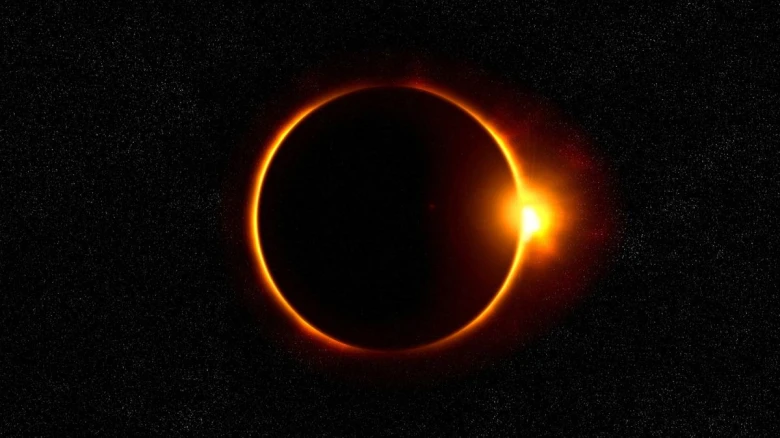The rare hybrid solar eclipse, also known as the Ningaloo eclipse, named after an Aboriginal word, is a combination of...
Digital Desk: It's that time of year when an extremely unusual alignment of celestial objects will be seen in the skies. This will be a unique hybrid solar eclipse seen from certain parts of the world. It will be neither a total nor a partial solar eclipse. The Earth, Moon, and Sun will come together to create a one-of-a-kind formation.
What exactly is a special hybrid solar eclipse?
The rare hybrid solar eclipse, also known as the Ningaloo eclipse, named after an Aboriginal word, is a combination of the two events in which the sun, moon, and earth form a straight line while our natural satellite blocks the star.
The path of the moon's shadow differs based on where the observer stands on Earth during the hybrid event.
When will there be a rare hybrid solar eclipse?
On April 20, a rare hybrid solar eclipse is going to take place, giving stargazers reason for excitement. It will begin at 10:04 a.m. and reach its peak at 11:30 a.m. Although the eclipse may last more than two hours, the period during which the Sun is completely covered will be less than a minute.
How can I watch the hybrid solar eclipse?
Are you prepared to see this heavenly phenomenon? Here's how to view the uncommon solar eclipse, or surya grahan.
On the National Aeronautics and Space Administration's (NASA) official YouTube channel, you can view a live stream. Live coverage will be provided from Australia.
Where will the hybrid solar eclipse be visible?
India will not be able to see the hybrid solar eclipse because its path does not pass through the nation. The hybrid solar eclipse can be observed in regions of Australia, the Pacific, South/East Asia, the Indian Ocean, and Antarctica. The total eclipse can be watched from Exmouth, Western Australia.

Leave A Comment